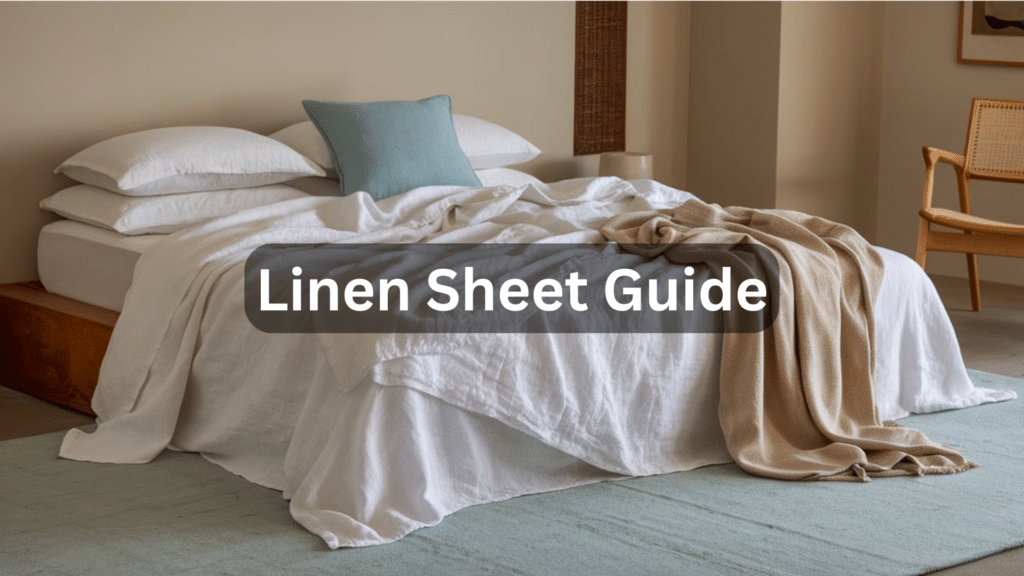Ever wondered what makes linen sheets so special? Or why they cost more than other bedding?
In this guide, I’ll explain exactly what linen sheets are made of and why they might be worth every penny. By the end, you’ll know if linen sheets are right for you and how to pick the best ones.
I’ve spent years learning about bedding materials and trying out different sheets. I can help you understand linen without confusing terms or sales talk.
Let’s talk about what makes these sheets different, starting with their natural roots.
What Are Linen Sheets Made Of?
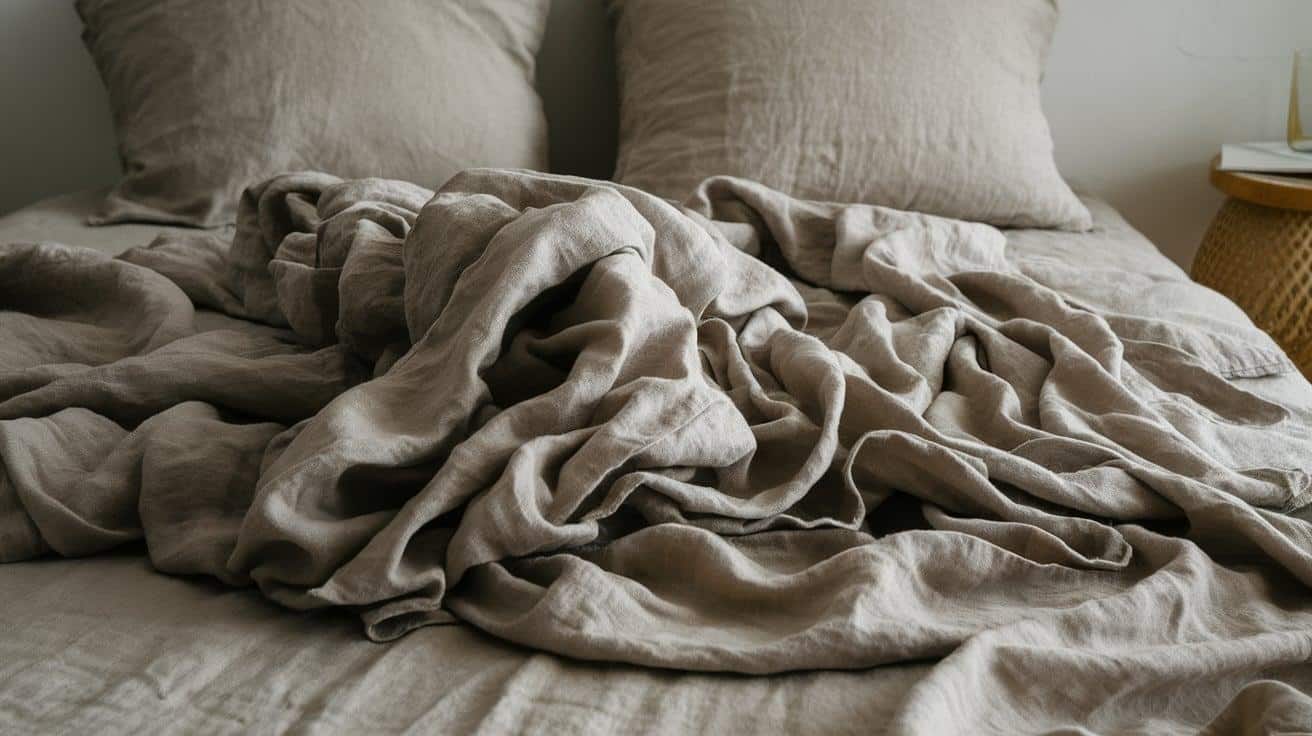
The answer is simple: linen comes from a plant called flax. But there’s more to the story than that.
The Flax Plant — Nature’s Source
Linen sheets begin as blue-flowered flax plants growing in fields.
Unlike cotton, which grows as fluffy balls, flax has long stems. The fibers inside these stems are turned into linen.
Flax plants need less water than cotton and can grow with fewer chemicals. This makes linen one of the most earth-friendly fabric options for your bed.
From Plant to Fiber
Turning flax into linen takes several steps:
- Harvesting: Farmers pull the whole plant from the ground to keep the fibers long
- Retting: Soaking the stalks to break down the outer part
- Breaking: Crush the stems to get to the fibers
- Combing: Pulling fibers through metal teeth to line them up
- Spinning: Twisting the fibers into thread
This method has stayed nearly the same for thousands of years. It takes more effort than making cotton sheets, which helps explain the higher price.
100% Linen vs. Linen Blends

When shopping, you’ll see both pure linen and mixed options.
100% linen sheets are made only from flax fibers. They offer all the benefits of linen but might feel rougher at first.
Linen blends mix flax with cotton, polyester, or rayon. These feel softer right away but may not last as long or breathe as well.
Check the label carefully. Some products marked “linen” may only have a small amount of real flax.
How Linen Fabric Is Made for Sheets
The Weaving Method
After spinning the flax into yarn, workers use looms to turn it into fabric.
Most linen sheets use a basic weave – the simplest pattern where threads cross over and under. This gives linen its well-known feel.
Thicker linen may use stronger patterns (like denim) for added durability.
Natural Texture and Slubs
If you look closely at linen, you’ll notice tiny bumps and thick spots called “slubs.”
These aren’t mistakes – they’re part of the natural fiber. They give linen its unique, relaxed look.
This uneven texture also explains why linen wrinkles more easily. The fibers don’t bend the same way as cotton or man-made materials.
Dyeing and Finishing
Natural linen comes in shades like oatmeal or tan. Companies bleach or dye the fabric to get white or colored sheets.
Some brands use stone-washing to soften the material, while others add softening chemicals. However, the best linen gets softer on its own through washing and use.
European brands often use fewer chemicals, making the product more natural.
What Makes Linen Sheets Stand Out?
Breathable and Moisture-Wicking
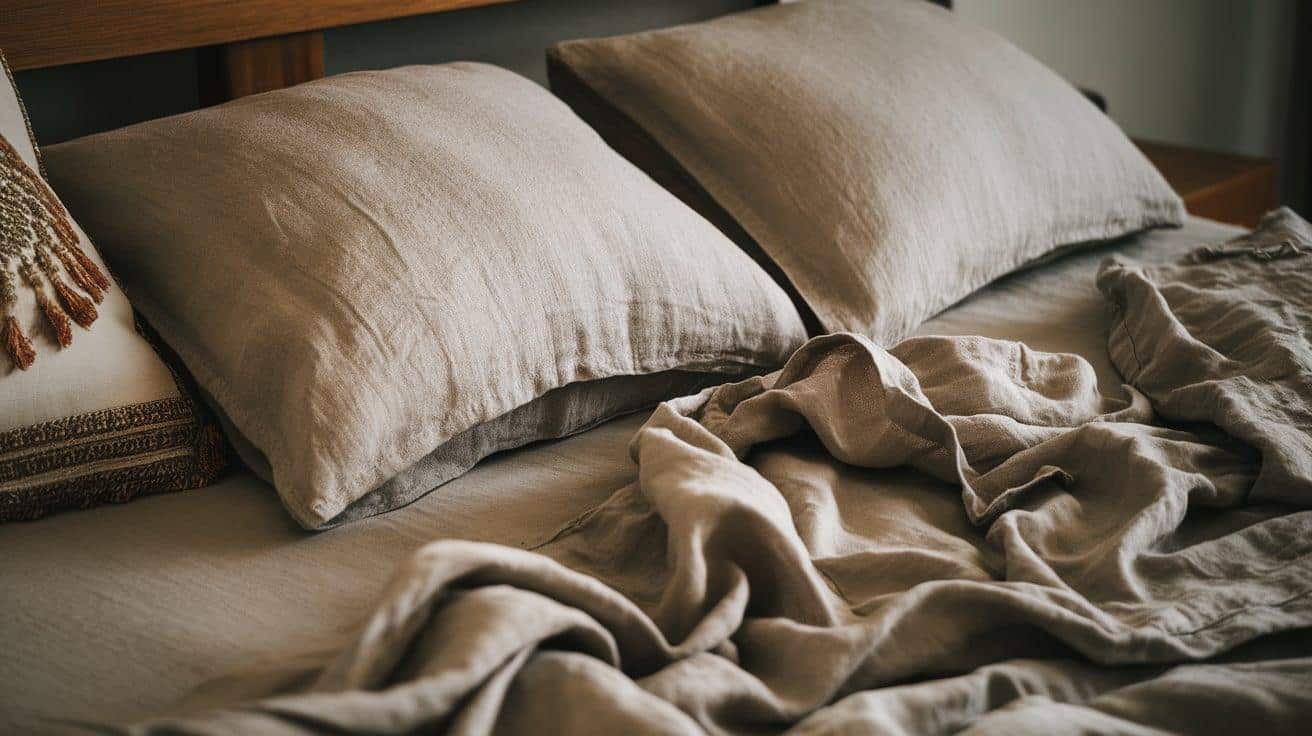
One of linen’s top qualities is how it handles body heat and sweat.
Flax fibers have tiny air spaces, letting air move freely. They also soak up water well without feeling wet.
This means linen sheets keep you cool in summer and warm in winter. They pull moisture off your skin while you sleep.
Durable and Long-Lasting
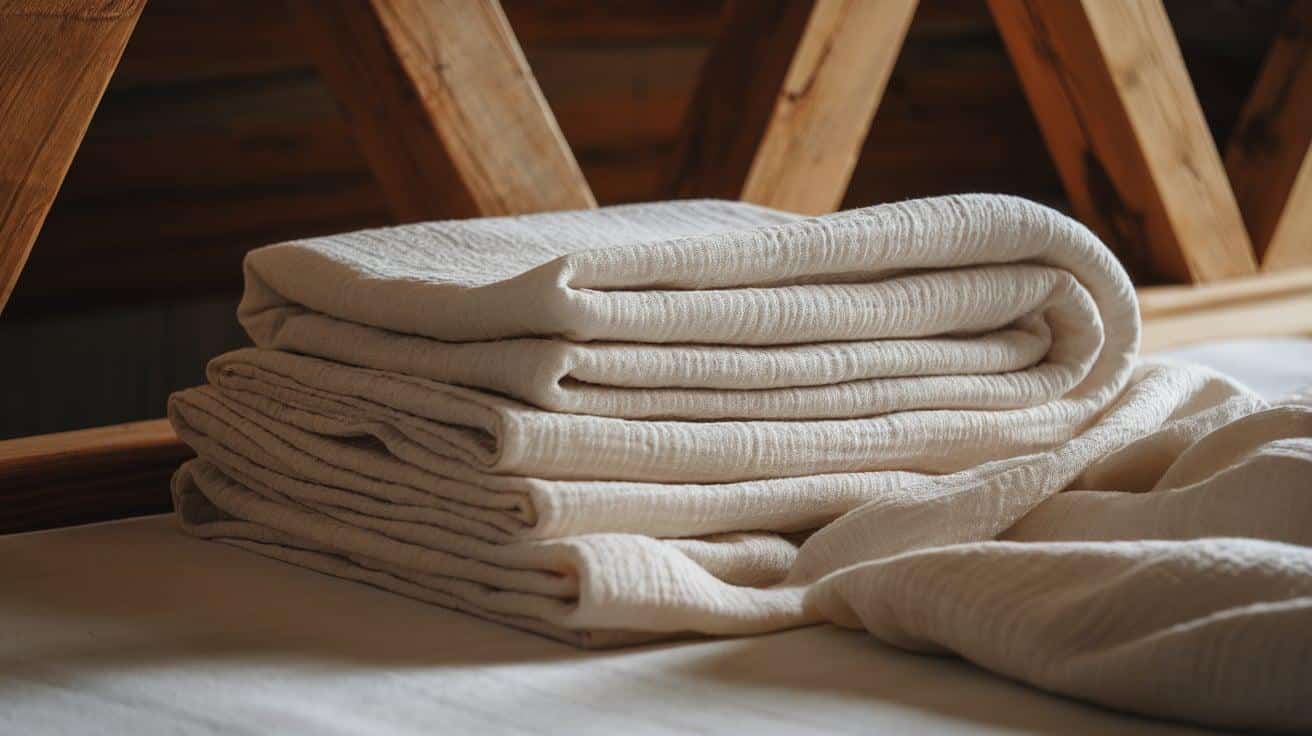
Even though it feels light, linen is very strong. Flax fibers are thicker and tougher than cotton.
With proper care, linen sheets often last 20–30 years – much longer than cotton sheets. They may cost more at first but save you money over time.
My grandmother still uses the linen sheets from her wedding!
Gets Softer with Use and Wash
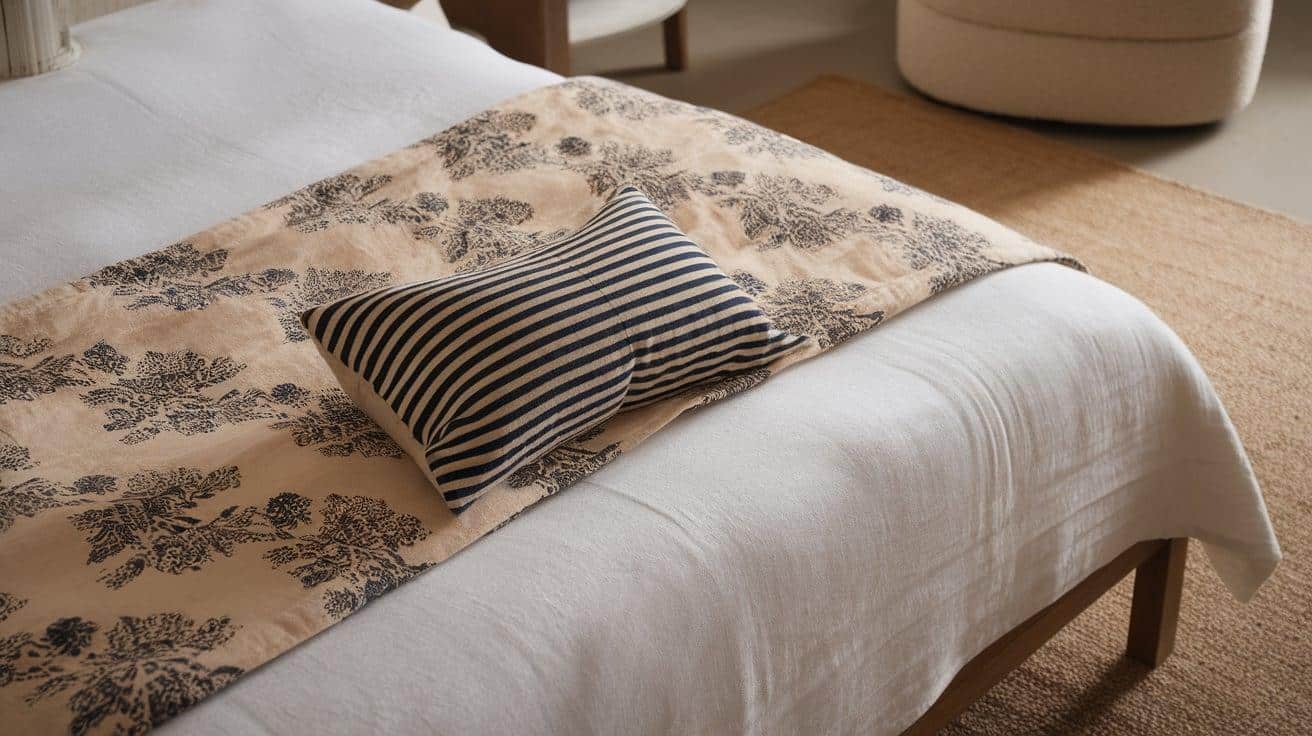
Unlike most fabrics that wear out, linen improves the more you use it.
Each wash softens the fibers without making them weaker. Over time, your sheets feel smoother and cozier.
This is why older linen feels so nice – it’s been softened naturally for years.
Common Myths About Linen Sheets
“They’re Scratchy”
Brand-new linen does feel firmer than cotton, but it’s not really “scratchy.”
It feels crisp and cool at first. After 3–5 washes, linen softens a lot. Give it some time, and it’ll feel great.
Tip: Add 1/2 cup of baking soda to the wash to speed up softening.
“They’re Too Expensive”
It’s true that good linen sheets cost more than basic cotton ones. But think about this:
- They last 3–4 times longer
- They work all year (not like flannel or thin summer sheets)
- They get better over time
When you think about how long they last, linen is a smart long-term buy.
“They’re Hard to Care For”
Linen is actually very easy to take care of:
- Machine washable in cool or warm water
- Gets softer on its own (no fabric softener needed)
- Dries fast (uses less energy)
- Naturally fights off smells and germs (needs fewer washes)
The only “issue” is wrinkling – but that casual, relaxed look is part of what people like about linen.
How to Pick Quality Linen Sheets
Read the Label
Good linen sheets will say “100% flax linen” or “100% linen.”
Watch for words like “linen blend,” “linen look,” or “linen feel” – those mean it’s not pure linen.
Where It’s Made
The best flax grows in cooler, wetter areas. Look for linen from:
- Belgium is often called the best in the world
- France – Especially the Normandy region
- Ireland – Known for great linen
- Lithuania and Belarus – Gaining strong reputations
While China makes cheaper linen, European brands usually use better methods and make a higher-quality product.
Weight and Thread Count (or GSM)
Thread count doesn’t matter much for linen. Instead, check the fabric weight, measured in GSM (grams per square meter):
- Light: 150–250 GSM – Great for hot weather
- Medium: 250–350 GSM – Best for year-round use
- Heavy: 350+ GSM – Cozy and warmer for colder months
For reference, cotton sheets range from 200–400 thread count. Linen sheets rarely go over 150 because the fibers are thicker.
Final Thoughts
Linen sheets are made from the flax plant using an old method that produces a strong, breathable fabric.
Learning how linen is made helps explain why it cools so well, lasts so long, and even why it costs more.
If you’re tired of buying new sheets every few years or waking up too warm at night, linen offers a natural option that only improves with time.
Frequently Asked Questions
Are linen sheets made entirely from plants?
Yes! Linen is 100% plant-based, made only from the flax plant’s stems. When you buy pure linen, you’re getting an all-natural product.
What’s the difference between flax and linen?
Flax is the plant; linen is the fabric. It’s like the difference between cotton crops and cotton cloth. Flax seeds are used for food and oil, and the stems become linen.
Do all linen sheets feel the same?
No. The feel of linen depends on how the flax was grown, how thick the fabric is, how it was finished, and how many times it’s been washed. European linen usually feels smoother than other kinds.
How are linen sheets different from cotton or bamboo?
Linen has thicker fibers, which makes it stronger but not as soft at first. It pulls away sweat better and dries faster than cotton or bamboo. It has a crisp feel that gets softer with time.
Can I find organic or eco-friendly linen sheets?
Yes! Look for linens labeled OEKO-TEX certified (no harmful chemicals) or GOTS-certified organic. Even regular linen is good for the planet because flax needs fewer chemicals and less water than cotton.

